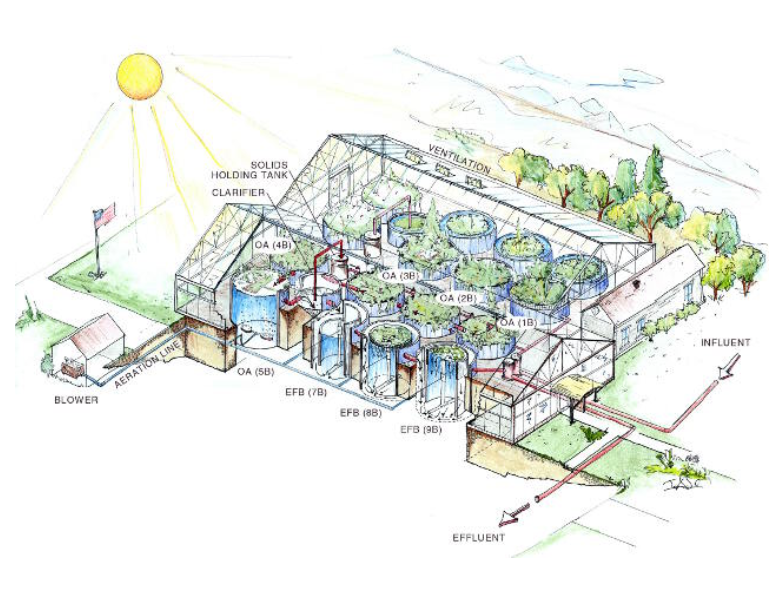
Eco-Machines
Almost thirty years ago the brilliant ecologist H. T. Odum employed analytical systems models to study the infrastructures that sustain humanity. He concluded that industrial society was on a collision course with the natural systems upon which it is dependent. He predicted that a fossil fuel dominated society would overshoot the Earth's carrying capacity and as a consequence there would be widespread suffering in the twenty first century.
For this new field Dr. Odum proposed the terms ecological design and ecological engineering. He went further and conducted experiments in ecological design and engineering as well as formulated some of their guiding principles. His landmark book Environment, Power and Society, published in 1971, launched ecology as an intellectual foundation for future design.
The same year, John Todd began the task of decoding information from ecosystems and applying the information to create new technologies that employed the biological complexities found in nature. The first experiments, carried out at the New Alchemy Institute and the Woods Hole Oceanographic Institution, involved designing and building engineered ecosystems for growing foods. During subsequent years these ideas were applied by Todd and his associates to the fields of aquaculture, fuel production, renewable energy development and architecture.
Much of our current work is based on the concept of linking normally unconnected sectors of society's infrastructures. This stage has been labeled industrial ecology. In broadest terms industrial ecology creates symbiotic systems throughout society which share and exchange resources internally just as ecosystems do in nature. Industrial ecologies can have high overall efficiencies because of resource sharing. Also, pollution can be mostly, if not completely, eliminated as one component's wastes is another component's energy, nutrient or materials source. An example is the growth of eco-industrial parks, which can be one solution to smart resource utilization. Another example is the use of Restorers to purify water and provide valuable secondary products as functions of the same process.




